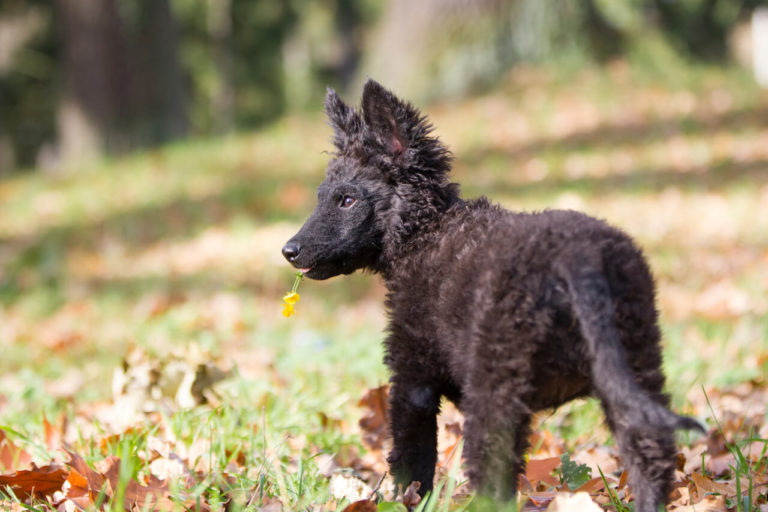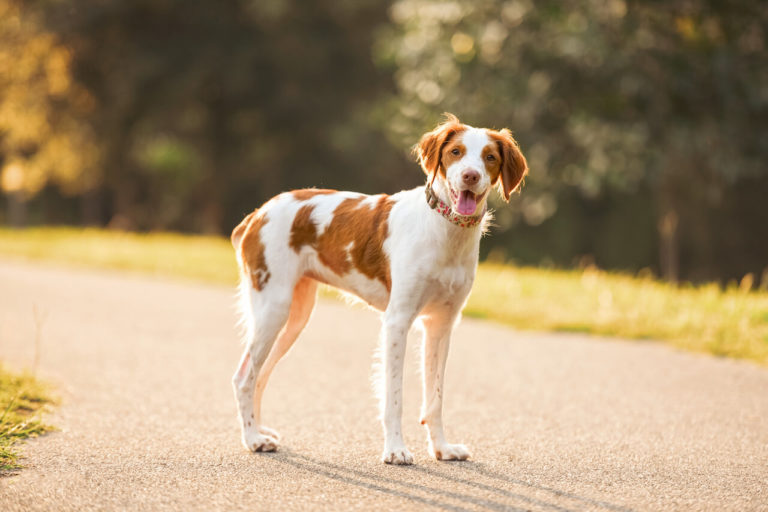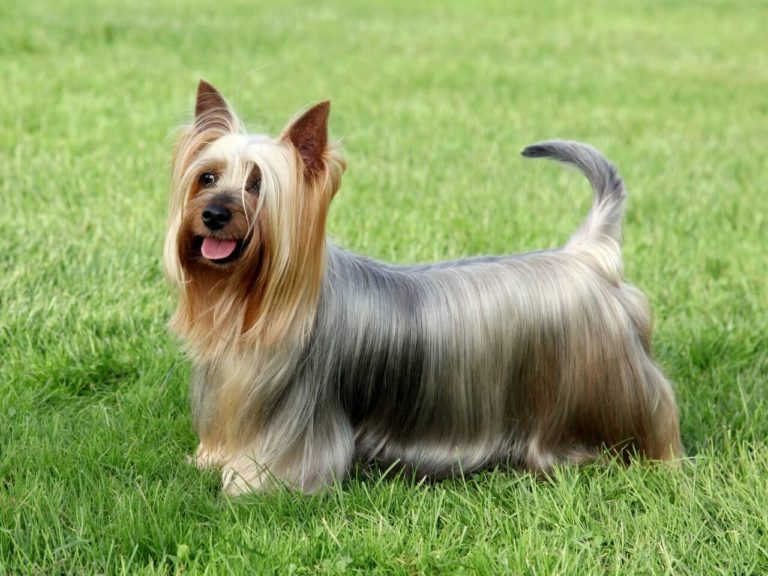






You are thinking about getting a Chesapeake Bay Retriever?
In this breed portrait you will find everything about keeping, care, nutrition and what you should consider when buying the breed.
Breed Description
Chesapeake Bay Retrievers are classified in group 8 of the FCI and are listed in section 1: retrieving dogs with working test. The working test is required by the FCI breed nomenclature.
The Golden Retriever, the Labrador Retriever or the Canadian Nova Scotia Duck Tolling Retriever, among others, are also listed in Section 1. The date of the final recognition of the Chesapeake Bay Retriever breed by the FCI was 15.09.1964.
Origin And History Of The Breed
The history of the Chesapeake Bay Retriever goes back more than two hundred years. It all began in 1807 with two St. John’s Newfoundland puppies. A reddish male named Sailor and a black female named Canton.
The two were rescued from a ship stranded on the Chesapeake Bay in the state of Maryland. Before their rescue, the puppies had endured several hours in the freezing water.
They were trained by their rescuers to become duck retriever dogs because of their obvious enjoyment of water. They are now considered the origin of the Chesapeake Bay Retriever.
The Chesapeake Bay is an estuary about 200 km long on the east coast of the United States. The bay is very shallow, the water usually cold and frozen until spring. Along the Chesapeake Bay runs the so-called Atlantic Flyway.
This is a flyway used by ducks and geese to their wintering grounds. Each year, the Bay hosts one-third of all migratory waterfowl that winter on the East Coast. This is the home of the fondly named Chessie, the Chesapeake Bay Retriever.
Many different theories exist about the development of the breed we know today. It is likely that Chesapeake Bay Retrievers were bred by crossing several other dog breeds.
Chesapeake Bay Retrievers combine Curly Coated and Flat Coated Retrievers, various breeds of Setters, Coonhounds and Irish Water Spaniels. They were first recognized as Chesapeake Bay Ducking Dogs at the Poultry and Fanciers Association Show in Baltimore in 1877.
The American Kennel Club officially recognized them as a breed standard in 1878, and the American Chesapeake Club held the first licensed show in 1932. Chesapeake Bay Retrievers are the only retriever breed originating in the United States.
Appearance Of The Chesapeake Bay Retriever

With a maximum shoulder height of up to 66 cm for males and 61 cm for females, Chesapeake Bay Retrievers are among the medium-sized dogs. Their weight can reach 25 to 37 kilograms. The physique of the Chesapeake is stocky and muscular, with the height being slightly less than the body length.
The leg length from the shoulder to the elbow and at the elbow to the ground is practically the same in Chesapeakes from recognized breedings. Its skull is broad and rounded with a muzzle half as long as the entire skull.
The medium sized, light yellow to amber eyes are set wide apart and have an intelligent, alert expression. The ears of the Chessie are set high on the head and hang down. However, they do not rest on the cheeks.
His medium length tail is of average thickness and is carried with a slight curve or quite straight. The characteristic feature of the breed is a thick, water-repellent, double coat.
It is slightly wavy on the shoulders, neck, back and loins, otherwise it is smooth. The outer coat is short and harsh. The undercoat is dense, fine, woolly and slightly oily – an adaptation to working in the icy waters of the Chesapeake Bay.
The undercoat serves the same function as a duck’s feathers. The fat prevents cold water from getting to its skin. This also helps the Chessie dry out quickly. When he shakes his fur, it holds virtually no water.
Many dog lovers believe that there are only brown Chesapeake Bay Retrievers. However, Chesapeakes are bred in a variety of colors with many shades. The coat of a Chessie is basically solid colored.
The 3 basic colors of Chesapeake Bay Retrievers are:
- Deadgrass: straw colors ranging from light (Light Deadgrass) to dark (Deadgrass) without a tinge of red
- Sedge: Straw colors with a red tinge, which may extend to fox red and chestnut red
- Brown: Light Brown, Brown, Dark Brown and Ash
In addition, the breed standard for the Chesapeake Bay Retriever allows for various white markings as well as a grain known as brindle, which is also found in Great Danes or Boxers.
A so-called mask as in Collies is rare, but also possible and allowed.
Character And Temperament
Chesapeake Bay Retrievers are bright, happy dogs that are prized for their calm demeanor. They are affectionate and very loyal to their owner.
These retrievers are intelligent and confident. Chesapeake Bay Retrievers have proven to be useful and passionate hunting companions.
Especially when water hunting, they love to show what they are capable of. But this dog breed is also popular as a rescue dog and guard dog.
Like other retrievers, the Chesapeake Bay Retriever is friendly, good-natured and fond of children. However, in one point it differs from Golden Retriever or Labrador Retriever.
That is his occasional stubbornness. As a working and hunting dog, the Chessie is used to making his own decisions. As a result, he sometimes tends to question a training action and or commands and, instead of following them, goes his own way.
This stubbornness is due to his self-confidence and intelligence. However, when given tasks that challenge him both physically and mentally, he will usually follow his handler’s instructions quickly and willingly.
Husbandry And Nutrition
Attitude
Chesapeake Retrievers are perfect for keeping as hunting or guard dogs. They are less suitable as a family dog. They are fond of children, family-friendly and cats living in the household are usually no problem for them.
But, they need a permanent caregiver and above all, they must always be kept busy in a meaningful way. If a Chesapeake Bay Retriever cannot fulfill his disposition as a hunting dog, he should be occupied otherwise.
For example, by retrieving dummies or tracking. Chessies need enough exercise every day to let off steam. They also don’t like to be alone for long periods of time. Unlike their cousins, you can’t leave them home alone all day while everyone is at work or school.
Without tasks to match his inclination, Chesapeake Bay Retrievers sometimes become problem dogs. For example, they will try to overprotect their territory by barking loudly at anyone who approaches.
Diet
Chesapeake Bay Retrievers are very hardy and robust dogs by nature. However, as with any dog breed, the health of Chessies is highly dependent on diet.
Improper nutrition is almost always the cause of obesity and in many cases, disease. During the growth phase from puppy to adulthood, a Chesapeake’s diet should not be too high in energy.
As with other dog breeds, you should make sure the Chesapeake is fed a diet that is appropriate for his age and activity level.
Education And Care
Education
The Chesapeake Bay Retriever dog breed originated as a water dog that could hunt and retrieve ducks and geese in the cold waters of the Chesapeake Bay. The dog’s strong build, thick coat, stamina and strength made him ideal for this purpose.
Today, he is still popular as a fine hunting dog and a wonderful companion for active, experienced dog owners who can give him the structure and exercise he needs.
This means that if you choose a Chessie, you will need to be a caregiver for him from an early age, showing him who is boss. Like any dog, the Chessie needs early socialization – exposure to many different people, places and sounds.
Still, as an adult, he tends to be reserved when he first meets strangers. Chessies need consistent obedience training without excessive harshness. They learn quickly and when you know who they belong to, they will follow you willingly and loyally.
Grooming
The effort required to care for a Chesapeake Bay Retriever is manageable and not very high. You should brush his unmistakably thick coat only once a week, so as not to impair its water-repellent properties.
During the shedding period, you can brush the Chessie once a day to remove dead hairs. You should always use a special dog brush for brushing. A Chesapeake should only be bathed or washed when absolutely necessary.
Always use a mild dog shampoo that will not overly stress the oil layer. The teeth of a Chessie should be brushed once a week with a suitable brush to reduce tartar build-up.
The nails on the paws, if not wearing down naturally from his activities, need to be trimmed once or twice a month. Nails that are too long can cause discomfort and problems with walking and running.
It is very important that you check a Chessie’s ears once a week for redness or odors that may indicate an infection. You can simply wash out the ears with a cotton ball moistened with a gentle ear cleaner.
Health And Typical Diseases
Chesapeake Bay Retrievers are a very hardy and robust breed of dog. Serious diseases are few and far between. However, like almost all other dog breeds, they are prone to hip dysplasia and elbow dysplasia.
What this means to you is, stairs are off limits for Chesapeake puppies until adulthood. They should not climb stairs until they are full grown to prevent hip dysplasia and elbow dysplasia.
Sometimes a Chesapeake will also suffer from what is called Progressive Retinal Atrophy. This is a degenerative eye disease that can lead to blindness. However, this is very rarely the case with a Chesapeake from a reputable breeder.
Likewise, the so-called Willebrand disease can occur in Chesapeakes. Willebrand’s disease is a hereditary blood disease caused by a clotting deficiency. Signs include excessive bleeding after an injury or surgery.
However, most dogs with this disease lead normal lives. Gastric dilatation volvulus, epilepsy and chondrodysplasia, a genetic condition in which a dog’s limbs are abnormally short in relation to the rest of its body, can also occur in Chessies.
However, these diseases are very rare. If you own a Chessie that shows these diseases, you should report it to the breeder so that carriers of the gene can be eliminated from the breeding line.
Life Expectancy Of The Chesapeake Bay Retriever

The life expectancy of a Chesapeake Bay Retriever is about 10 to 13 years. Only rarely do individual specimens reach an age of up to 15 years.
Always provided they are properly nourished and exercised both physically and mentally.
Buying A Dog Breed Chesapeake Bay Retriever
If you decide to buy a Chesapeake Bay Retriever, there are some points you should consider. If possible, you should only buy a Chessie from a breeder. Here you can be sure to buy a healthy dog.
On the website of the Deutscher Retriever Club e. V. or the Verband für das Deutsche Hundewesen (VDH) you can find more information and recognized breeders.
A Chesapeake from a breeder costs about 1,200 to 1,300 Euros as a puppy. In addition, you must not forget that after the purchase and in the following years further costs come on you.
For example, for the vet, a first equipment with leash, brush and possibly dog bed.
Decision Support
When deciding on a Chesapeake Bay Retriever, you should be aware that a Chesapeake takes a lot of time and that for the next 10 to 13 years vacations without him are practically impossible.
In order for you to estimate what to expect when buying a Chesapeake Bay Retriever, you should consider where his roots are. It is said that he jumps into cold water without hesitation and retrieves up to 100 ducks a day.
So his urge to move is very great. If you are willing to spend a lot of time with him and always give him new tasks, your Chesapeake Bay Retriever will be a loyal companion for a lifetime.
FAQ About The Chesapeake Bay Retriever
A Chesapeake Bay Retriever’s coat can range in color from straw to dark brown to reddish.
Chesapeake Bay Retriever are active and fun-loving. They are known for their intelligence and loyalty to their humans. In addition, this dog breed is friendly and suitable even for families with children. There very people-oriented, but have a mind of their own, which can make training (and possibly use for hunting) difficult: the Chesapeake Bay Retriever then goes its own way And questions commands.
The Chesapeake Bay Retriever cost between 1200 and 1400 Euro.
Chesapeake Bay Retriever less than other dogs.
The Chesapeake Bay Retriever grows approximately 53 to 68 cm.
A Chesapeake Bay Retriever can live up to 12 years.
A full grown Chesapeake Bay Retriever weighs approximately 25 to 37 kg.














1 thought on “Chesapeake Bay Retriever”